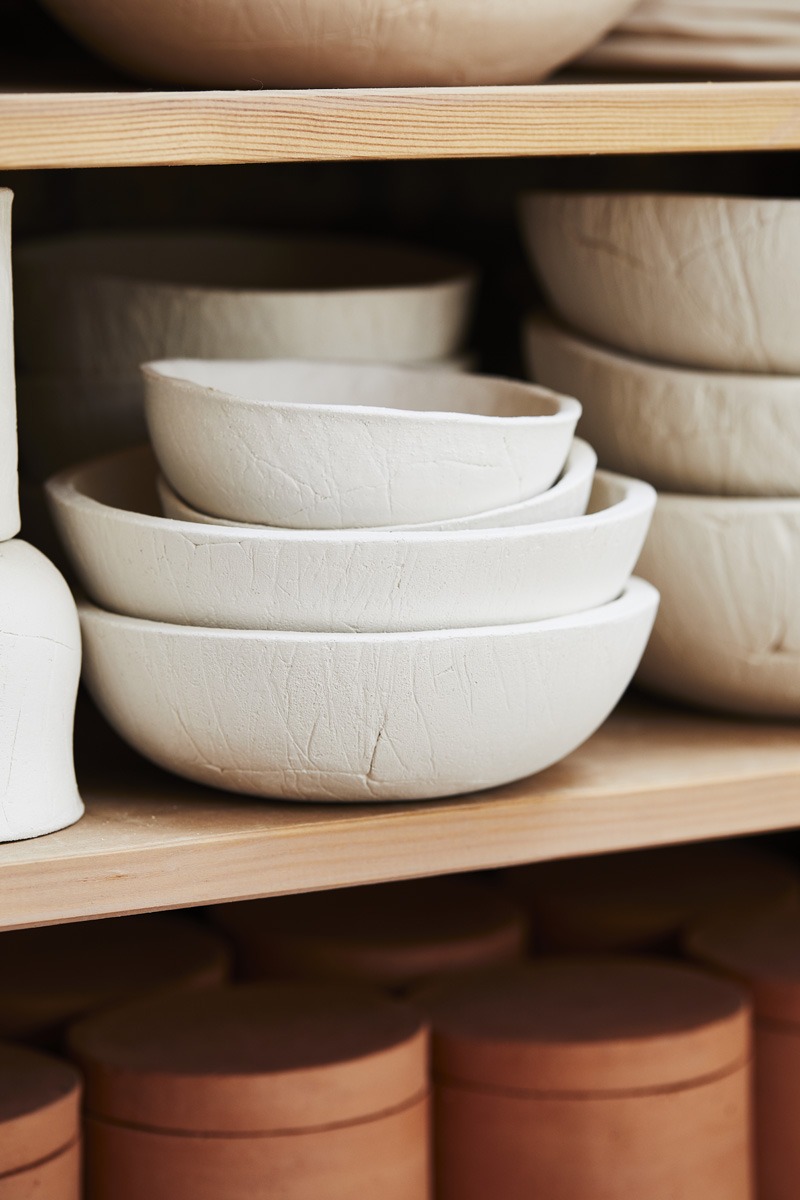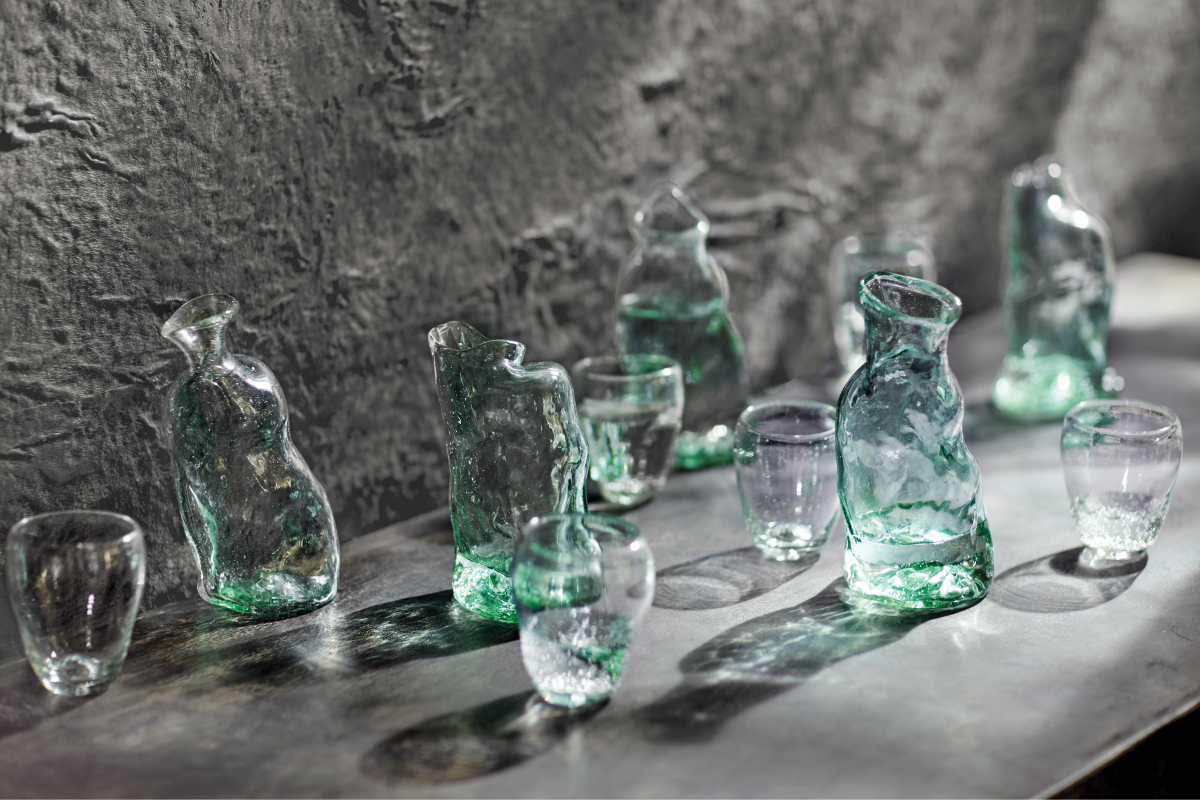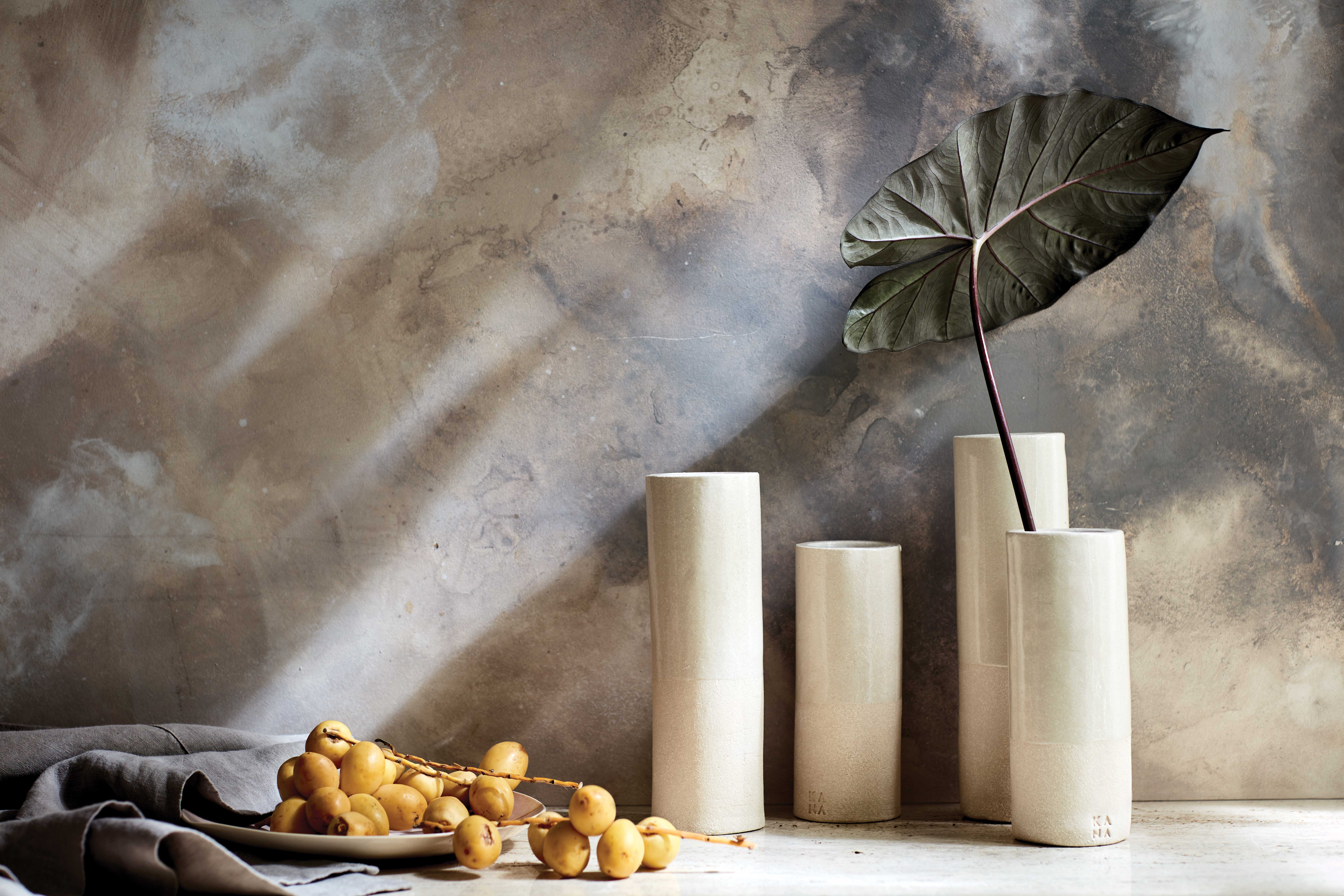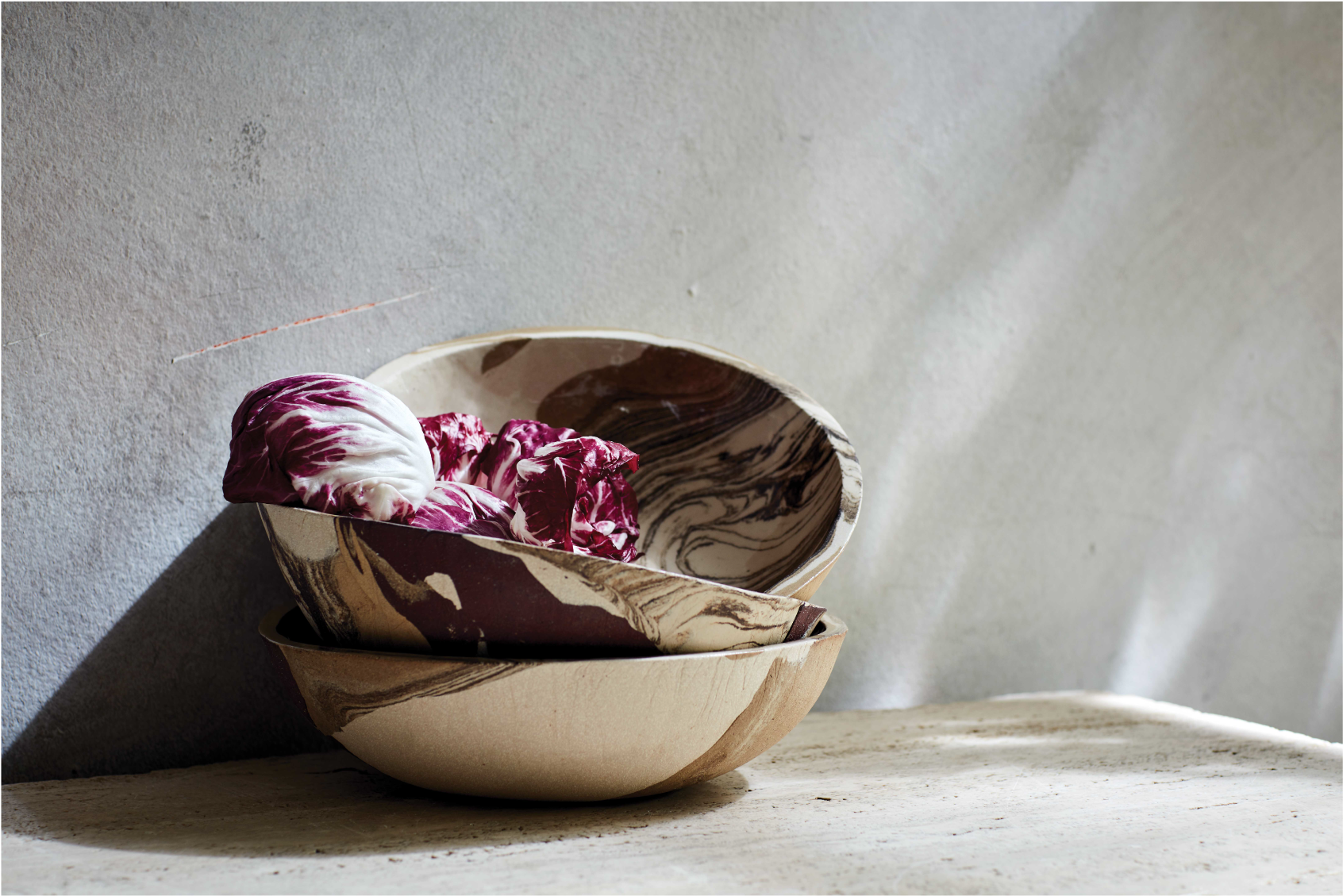The Inspiration Edit: KANA London
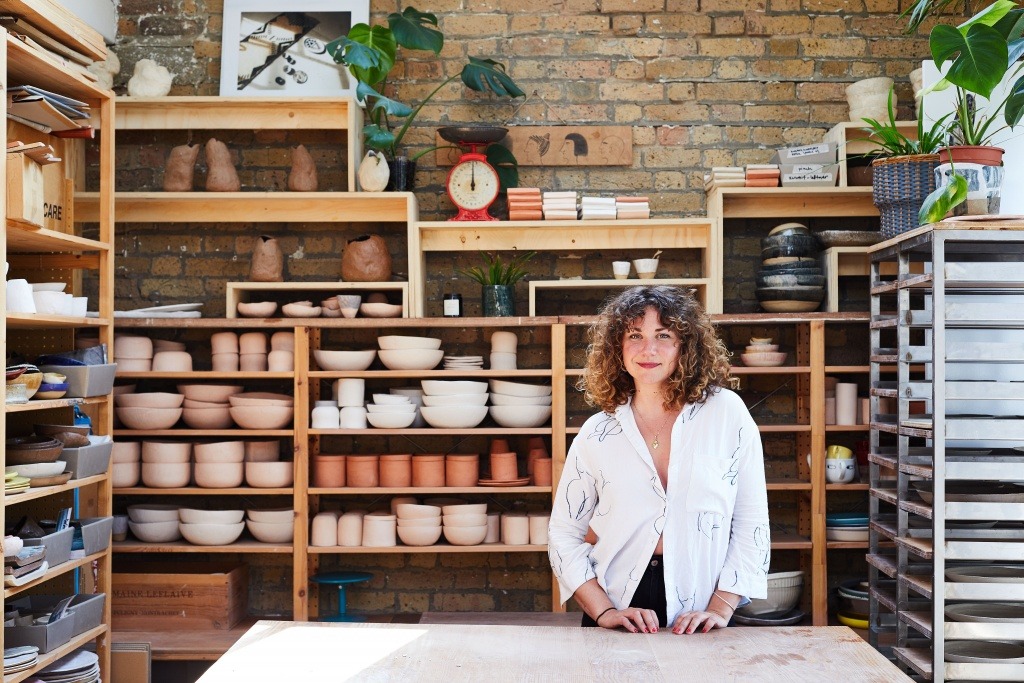
Honoring the imperfect, and irresistible beauty of natural processes, ceramicist and sculptor Ana Kerin explores the subtle imperfections and inconsistencies of hand built aesthetics at her studio, KANA London. Celebrating beauty in imperfection, KANA London combines artisanship with functional sensibility to bring art into every day use.
A formal background in Fine Art followed by training in sculpture (at the Academy of Fine Art and Design in Slovenia and the National College of Art & Design in Ireland, respectively), led the Slovenian-born sculptor to apply the principles of her fine art experience – the tactile, hand built aesthetics, subtle imperfections and inconsistencies in material – into functional ceramics at her studio, KANA London.
Ana Kerin’s experimental approach to traditional ceramic practices is characterized by a respect for organic processes, opting to work exclusively by hand rather than at the wheel. She combines unique mixtures of clay and develops her own glazing recipes, resulting in a wonderful range of ceramics that resonate with an imperfect, yet irresistible, beauty. Our exclusive collaboration with KANA London is an homage to the natural process, and to the beauty of things imperfect.
Below, Ana Kerin discuss her creative process, her sources of inspiration in everyday life, and the importance of feeding creativity through curiosity.
Your work balances functionality with timeless aesthetic appeal. How has your formal training in sculpture and fine arts informed your work?
On the one hand, I was very lucky to have received classical fine art training, not only learning the history and technical skills of various artistic expressions, but exploring and implementing an extensive range of techniques – many of which were extremely outside of my comfort zone. Looking back, this training was so imperative because it eliminated any fears that I might have of experimenting with material application or techniques as an artist. I don’t feel bound by any projection of what I ‘should’ be doing or what tools I ‘should’ be using. Instead I feel free to blend all the tools, materials and techniques. On the other hand, fine art is an emphasis on visual aesthetics, so I had to learn to work with some of the conceptional limitations of functionality. I have to find conceptional meaning behind each piece, before I can bring functionality into the aesthetic experience.
Tell us about your creative process. Do you begin with considering the object’s functional restrictions and then design around it, or is it the other way around?
It really depends on the project. Some ideas begin as more romantic and poetic, beginning with an abstract or philosophical concept and then trying to materialize its functionality. Or sometimes I’m playing with a form that is already quite functional, and through the process I bring the context by choosing which material I use, how I treat that material, and what techniques I choose.
You work with unique combinations of clays, mix your own glazes, and opt to work by hand rather than using a wheel which is quite the opposite of traditional ceramic practices. How did you develop your own approach, and why is it important?
I never use the wheel, but I do sometimes use some sort of mold. If you refer to classical expressions of mold pressing, they’re most often made of plaster and are not concave but convex. I work a bit differently – I often make molds from clay or objects that have a personal connection to me or even from previous ceramic bowls that I’ve made in the past. The inspiration behind recycling molds came from when I worked as a consultant in West Africa, and being inspired to use objects around us resourcefully, instead of creating something new. I started thinking about this from not only as a preservation perspective, but also as a way to imbue one of my pieces with even more conceptual meaning.
For example, the mold that I use in one of my most distinctive designs is from my grandmother. She had a bowl that she used to pick tomatoes and lettuce from her garden. Though my grandmother has passed away, I remain emotionally attached to this bowl and the memories of growing up so close to nature.
With this technique you can have two sides to the texture, which is really important to me as a sculptor. Small imperfections from human touch such as fingerprints, superficial cracks & indentations add to the individuality of each piece and impart it with soul and meaning.
How do you hope that people connect with your work?
I hope to blur the lines between sculptural work and functional art, encouraging people to see an everyday object as a sculpture, yet still be able to use it for its intended purpose. I hope to inspire people to live with objects that they love, and to fuse artisanship and functional sensibility to bring art into everyday use. Life is short, and I believe we should treasure the objects we possess and celebrate them every moment of everyday.
What in everyday life do you find the most inspiring?
I’m pretty precious about my morning routine, which is actually not a routine at all. Sometimes I wake up at 4:30AM, and I try to honor my natural energy cycles to wake up and enjoy the silence to read, meditate or journal. Sometimes, of course, I get pulled into answering emails or working, some days I go to yoga, and some days I end up sleeping in. The point is that I choose to honor what actions feels right for me in these early hours of the morning.
Can you share your take on how your home (or surroundings) impact your overall well-being?
Home is a reflection of my mental space. In my mind, I am a minimalist, but in reality a maximalist. It’s hard for me to work if things aren’t in order or if things aren’t clean and tidy – I won’t have creative space to think. Even my studio is cluttered yet clean, with all of the work surfaces wiped down and everything color coded on the shelves.
If the objects in your home could speak, which would have the best story to tell?
My kitchen table.
We are always curious about how artists and designers keep their spark and creative drive while running a business. What’s your process for working on yourself while you’re working on your business? In what ways do you choose to invest in yourself?
I try not to take myself too seriously or take life too seriously. Even though I take my deadlines and relationships seriously (friends, family, taxes, etc.) I try remain as spontaneous and playful as possible and allow myself to be irrational or irresponsible on occasion. Stay up late! Order dessert! Go with the flow! Listen to yourself!
In terms of keeping my creative drive operating, there’s a quote that has stuck with me through the years which is, “keep your curiosity sacred.” Even in the most difficult moments, find something to be curious about.
Photo Credits for Ana in Her Studio: Georgia Gold
"Small imperfections from human touch such as fingerprints, superficial cracks & indentations add to the individuality of each piece and impart it with soul and meaning."

